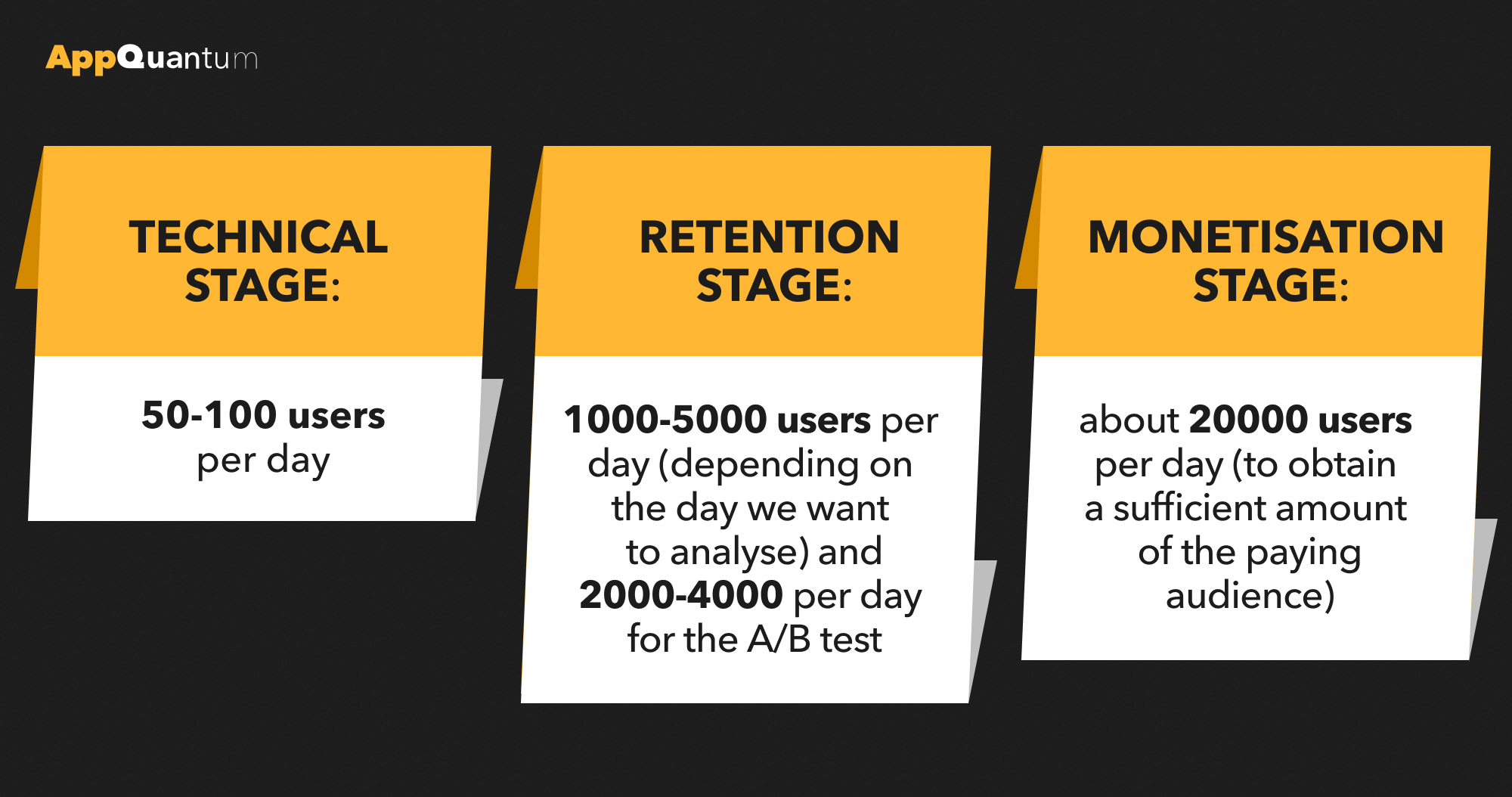Sergey Ryabtsev and Alina Zlotnik, producers of AppQuantum, told about the nuances of the softlonch of mobile games and common mistakes, using the example of Love & Flowers.
Love & Flowers
Sergey Ryabtsev and Alina Zlotnik
Softlonch is a period when the game is available to a limited number of users in order to make the product better by the time of global release based on their behavior.
Softlonch will allow you to save a lot of money and understand whether it is worth continuing to work on the game at all. To better understand the nature of the errors that arise at this stage, let’s talk about the existing approaches.
Which countries are most often chosen for softlonch and why?
According to information from open sources, five years ago, 72% of the soft launch of mobile games was only in Canada. Why? It’s simple, because Canada is as similar as possible in terms of audience characteristics to the United States: an English-speaking, solvent population, and also geographically located next to the States. And it is necessary to understand the behavior of users of a Tier-1 region or similar to it as early as possible.
However, if the game is designed exclusively for Asian countries, there is nothing to test it in the West — the collected metrics will not give a correct idea of the post-release period. In addition, it is worth considering which devices are used by potential players. Recall that in America and Europe there are many people with iOS devices, and Android is more popular in Southeast Asia.
To carry out all stages of the softlonch and obtain reliable results, it is necessary to attract a large number of users. For example, the launch of monetization in India, where 1.4 billion people live as of 2022, can really give a lot of players. However, there are two problems — in this country, the majority of residents use Android, and the solvency of the population is much inferior to the audience from the United States and European countries. It is not necessary to choose a country for testing monetization on the principle of “the more people, the more money”.
At the same time, there is no specific required number of attracted users for ideal tests. Just remember: the fewer players you have, the more blurry the results will be — you should not trust such indicators. If we take absolutely average values, then some experts are guided by such approximate figures:
- technical stage: 50-100 users per day;
- retention stage: 1000-5000 users per day (depending on which day we want to get retention) and 2000-4000 users per day for A/B tests;
- monetization stage: about 20,000 users per day to get enough paying audience.
Over time, tests began to be carried out even in those countries that were supposed to be the target audience of the final product. For example, some projects were tested at all stages of the softlonch in the USA at once, although Canada, the UK and European countries were previously chosen. At first it was rather an experiment, but now this approach no longer looks extreme and thoughtless. Of course, it is still more relevant and cheaper to test games in the shooting ranges generally accepted for each stage:
- Tier-3 countries (Philippines, Brazil, Indonesia) are suitable for high-quality tuning of the technical side;
- to form the right retention metrics, a large number of users from Tier-2 countries (Canada, Australia, New Zealand) are usually attracted;
- to set up monetization, you should pay attention to Tier-1 countries in order to attract the highest quality and similar to the target audience (Britain, the USA, a number of European countries).
Errors during the Love & Flowers softlonch
Now let’s move on to the story of Love & Flowers. In the case of this game, we decided to deviate from the rules and try something new. Sometimes such attempts can lead to successful discoveries and big profits, however, as it turned out, not this time.
Love & Flowers is a mobile game from one of our internal development studios. The team really wanted to try their hand at the time manager genre, but in an unusual and fresh style. The developers found inspiration in the Cooking Diary project. After making a small survey of the market, they chose the setting of a flower shop. The idea had good potential, the budget was formed, and the implementation was handled by professionals. What could have gone wrong?
Time Manager genre data:
- the heyday of the genre occurred in 2018-2020;
- an interesting trend is that for each year of this period, only one game was released, which leads in earnings by a margin:
- Cooking Diary — 2018;
- Diner DASH Adventures — 2019;
- Grand Hotel Mania — 2020.
- the absolute leader in settings is the Restaurant. Next come the Hotels, but they can’t stand the competition in terms of quantity;
- all projects show the highest income from IAP in the USA. The exception is Hungry Hearts Diner, which is focused on the Asian market and earns exclusively on it;
- in 2022, there was not a single game released globally and whose revenue reached the $200 thousand mark. However, there are several such projects in the Asian market, for example, 开间小店–模拟经营你的..
Mistake 1. Haste
The team was eager to make Love & Flowers in a very short time. It turned out to be difficult to assemble a project with a high level of production in three or four months, but at the same time it gave the team motivation. However, due to the high production speed, many technical features of the game were made poorly: at the stage of the softlonch, it became clear that for further refinement of the project, most parts of the game must be redone. The rush also affected incorrect market analysis.
Mistake 2. Weak competitive market analysis
Love & Flowers was exactly the project that the internal team started doing “on a whim”. The market was investigated only for settings: the developers did not find
similar titles about flower shops, after which we started creating the game. However, they did not study the target audience and the specifics of the genre. As a result, a small team consisting of seven or eight people took up a genre that was very demanding of content and deep meta. This approach looked doubtful from the very beginning.
If we talk about mistakes on our part as a publisher, then we did not have time to convey to the team in time the idea that in order to release a project of a competitive level on the market, it is necessary to go into a very long development. They wanted to make a really good game with an unusual approach, but the lack of thorough analysis led to a number of other mistakes.
Error 3. Lack of benchmarks for the project
At the time of the release and the first tests, the team did not have clear target metrics for the project — only a desire to do better. This approach has led to a misunderstanding of which specific metrics need to be corrected first, and which meet the standards of the market. So we came to the following problem: retention.
Love & Flowers Retention
Error 4. Lack of focus on specific metrics when changing the game
After the first tests of the project, together with the development team, we began to fix everything at the same time: low long-term retention (with the help of content), dumps at the first levels (adjusted the balance), and also add monetization. Because of this, it became difficult to track which specific changes we made had a positive impact, and which ones had a negative impact. From version to version, the application got a little better, but it was not clear why exactly.
Mistake 5. Narrative for narrative’s sake (or feature for feature’s sake)
In many games of the time manager genre, narrative is used in some of its types. Love & Flowers was no exception — a storyline was added to the game, but it is not supported by actions in the game in any way. When something happened in the story, the characters discussed their actions, but in fact it did not affect anything. In addition, the text was written quite quickly and did not iterate over time.
In the future, we conducted a simple experiment — we removed the dialogues from the game, and then compared the two versions. According to the test results, the lack of narrative did not affect the retention, time or length of the session in any way. Unfortunately, sometimes developers plan features not to affect the metric, but because it is “cool” and “used everywhere”. In this case, the narrative turned out to be meaningless precisely because of this approach.
Error 6. The test at all stages of development was conducted in the USA
Most often, as we have already said, the first tests of the project are conducted not in the target (Tier-1) countries, but in Brazil, India and others. This method helps to collect data for a smaller amount of money, while the amount of information is much larger. However, Love & Flowers was experimentally tested only in the USA. As a result, significantly more money was spent on testing hypotheses and changes than was originally planned.
Indicators for the test of creatives in the USA
Result
The Love & Flowers project was closed.
No matter what potential your game has, you need to think carefully about every action at all stages of the softlonch and prepare for it correctly. It should be understood that not all products that have reached the softlonch are doomed to success. Sometimes a project is not able to scale, the product decisions made turn out to be incorrect, and the metrics do not reach the planned values or fall altogether. In such cases, you need to find the strength to abandon further development. Project support at this stage is very expensive, and not everyone can afford to burn money in the hope of finding the only right solution that will allow the game to become a hit or at least survive.
How to avoid the fate of Love & Flowers?
- plan ahead. You should have a roadmap ready for the next few updates so that your development team does not wait for the test results together with the publisher.;
- take your time. Wait for the results of the previous changes before entering the following;
- don’t test all the innovations at once. There is no need to put a lot of overlapping features in each update. Otherwise, you will not be able to draw the right conclusions and understand what exactly from the large list of changes affected the results;
- if you are in a hurry, it is better to test several features that affect different metrics;
- don’t get attached to the product. Sometimes it is more profitable to close a project and save money than to try to rehabilitate a game with bad metrics.
The situation with the mobile game Love & Flowers became indicative and gave us a useful experience that allowed us to avoid similar mistakes in the future. If you need quality expertise for a softlonch, AppQuantum will be happy to help you!





